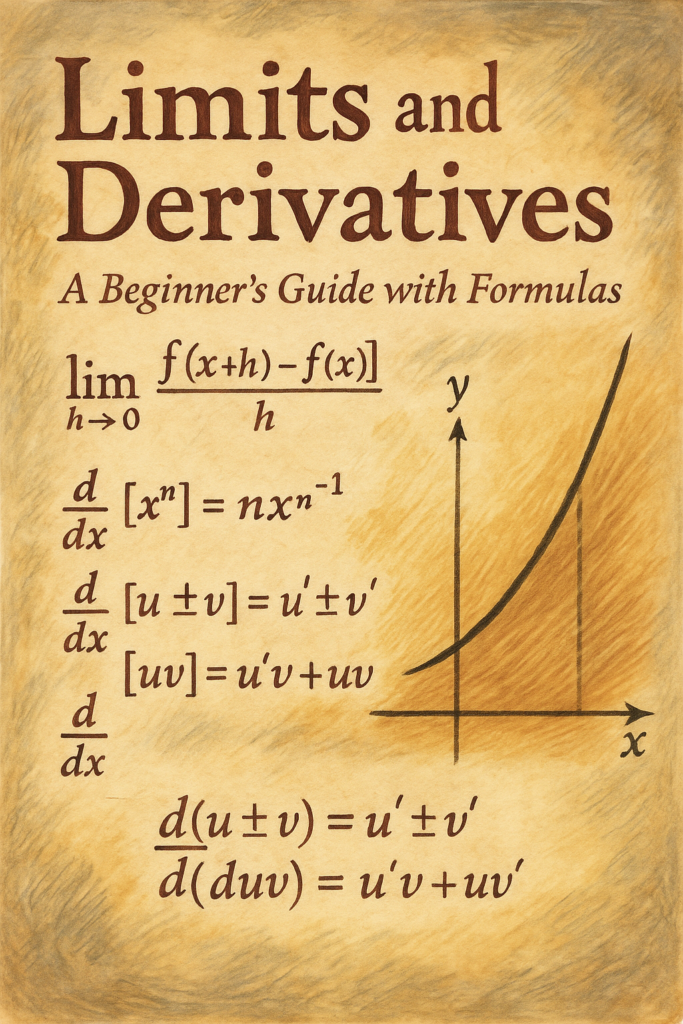Limits and Derivatives: A Complete Guide with Key Formulas
Limits and derivatives form the foundation of calculus. Understanding these concepts is essential for studying change and motion in mathematics, physics, engineering, and many other fields. This guide explores both limits and derivatives in detail, with key formulas and real-world applications—spanning more than 600 words.
Understanding Limits
Limits help us understand the behavior of functions as they approach a certain point. They are fundamental to defining derivatives and understanding continuity.
limx→a f(x) = L
This means as x approaches a, the function f(x) approaches the value L.
Important Limit Formulas
- limx→a c = c
- limx→a x = a
- limx→a xⁿ = aⁿ
- limx→a [f(x) ± g(x)] = limx→a f(x) ± limx→a g(x)
- limx→0 (sin x)/x = 1
- limx→∞ 1/x = 0
Types of Limits
- One-sided Limits: limx→a⁻ f(x) and limx→a⁺ f(x)
- Infinite Limits: When a function increases or decreases without bound
- Limits at Infinity: limx→∞ f(x) or limx→−∞ f(x)
Understanding Derivatives
The derivative measures how a function changes as its input changes. It’s the rate of change or the slope of the tangent to a curve.
f'(x) = limh→0 [f(x + h) – f(x)] / h
This limit definition gives the derivative of f(x) at a point x.
Basic Derivative Formulas
- d/dx (c) = 0
- d/dx (x) = 1
- d/dx (xⁿ) = n·xⁿ⁻¹
- d/dx (e^x) = e^x
- d/dx (ln x) = 1/x
Trigonometric Derivatives
- d/dx (sin x) = cos x
- d/dx (cos x) = -sin x
- d/dx (tan x) = sec² x
Rules of Differentiation
- Product Rule: d/dx (uv) = u’v + uv’
- Quotient Rule: d/dx (u/v) = (v·u’ – u·v’) / v²
- Chain Rule: d/dx [f(g(x))] = f'(g(x)) · g'(x)
Applications of Limits and Derivatives
- Understanding continuity and identifying discontinuities
- Finding the slope of curves at a point
- Analyzing motion (velocity and acceleration)
- Optimizing functions for maximum or minimum values
- Studying population growth, decay, and rates of change in biology
Conclusion
Limits and derivatives are essential for understanding and solving problems related to change and continuity. Their principles are the gateway to advanced calculus and have wide-reaching applications in the real world. Mastering their formulas and conceptual foundations lays the groundwork for further mathematical exploration.
“Limits take us to the edge, and derivatives tell us how steep the drop is.”



